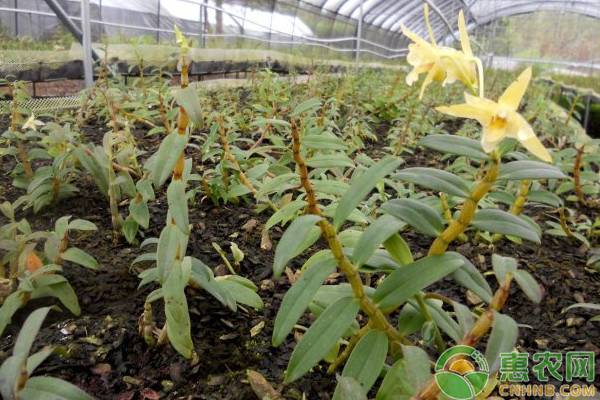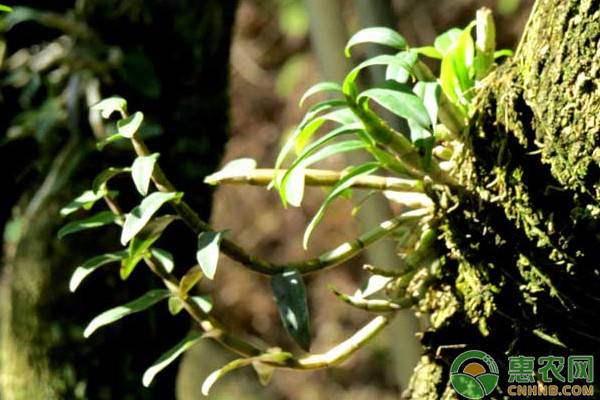How is the Dendrobium Dendrobium? Dendrobium candidum is a relatively traditional Chinese herbal medicine in China. It has a very high medicinal value and ranks first among the “Chinese Nine Grassesâ€. Due to the harsh growth conditions of the sarcophagus and the low natural fertility, coupled with the wild picking of wild resources, the artificially cultivated Dendrobium Dendrobium has become the main source of supply. Let's take a look at a key technology for the production of Dendrobium candidum. 1 Water management Dendrobium can be used in a humid environment and should maintain a high humidity in the shed. In the daily management, the principle of seeing wetness is the principle of watering, that is, the surface of the substrate is dried and then watered, and a small amount is poured. The water quality is clean, the acidity and alkalinity are slightly acidic to neutral, and the water volume is basically sprayed through the substrate. It is strictly necessary to be in a damp state. Watering should be carried out in the form of spray during the day, and it is not suitable to water in the greenhouse during rainy days. Under the premise of ensuring a good ventilation environment, the relative humidity in the shed is maintained at 70% to 85%. In summer, Dendrobium candidum has the fastest growth period and the largest growth period. Under the premise of good ventilation conditions, the environment should be kept as high as possible. The number of sprinkler irrigation can be increased, the sprinkler irrigation time can be shortened, and watering at noon should be avoided as much as possible. After entering October, Dendrobium candidum basically stopped growing into a dormant period, and the number of sprinklers should be gradually reduced. Watering in winter should be selected after 10:00 in the morning on sunny days. It is advisable to pour water without water. Sprinkle every 3 to 4 weeks. Pay attention to keeping warm in the morning and evening and ventilation during the day to avoid watering in continuous rain and cold weather. 2 Fertilization management Before transplanting and planting, the cultivated substrate is mixed with the decomposed rapeseed cake as the base fertilizer, and the ratio of the rapeseed cake to the cultivation substrate is 1:4. In the early stage of cultivation, foliar spray fertilizer was mainly used, and 0.1% potassium dihydrogen phosphate and 0.2% urea were alternately applied as foliar fertilizer every half month. Fertilization time is generally in the growing season of April to October every year. When Dendrobium candidum stops growing into a dormant period, fertilization is also stopped. The second year after transplanting, fertilization is based on base fertilizer. The organic fertilizers such as fermented sheep manure and rapeseed cake are mainly applied to the earthworm as the base fertilizer, and the fertilization time should be selected from the year to the month before flowering. After the flowering period, the nutrients were replenished in time, and 0.2% potassium dihydrogen phosphate foliar fertilizer was sprayed every two months for 2 months. In the summer, combined with growth, 0.1% N:P:K=20:20:20 compound fertilizer was used for foliar spray fertilizer, and sprayed with trace element fertilizer once every half month. Fertilization was stopped from the first three months of the harvest period. 3 pest control The growth environment of Dendrobium candidum is warm and humid, and the ventilation in the greenhouse is very prone to pests and diseases. The prevention and control of Dendrobium candidum should be based on the principle of “prevention first, comprehensive prevention and controlâ€, taking preventive measures such as disinfection of cultivation substrate, cleaning of debris around the site, strict isolation inside and outside the shed, and the combination of chemical control after pests and diseases. It is forbidden to use high-toxicity, high-residue pesticides and use certain chemical pesticides to a limited extent. Keeping the cultivation environment of Dendrobium candidum clean and ventilated, and the ecological environment is relatively independent, is the main method to reduce the occurrence of pests and diseases. The main diseases of Dendrobium candidum are Dendrobium leaf spot, Dendrobium soft rot and Gray mold. Dendrobium spot disease, mainly harmful to the leaves, the dark brown spots are enlarged at the onset, and the necrosis at the center is brown. Control method: strengthen ventilation, timely remove diseased leaves, spray 0.1% chlorothalonil solution to prevent and control. Dendrobium soft rot is a bacterial disease that infects from the rhizome. The diseased plants are yellow-brown softened and rot-like, with brown water droplets leaching and special odor. Control method: strengthen ventilation, do not accumulate water in the cultivation substrate, remove the diseased leaves in time, remove the diseased plants; spray with 0.5% Bordeaux mixture or 200 mg/L agricultural streptomycin. Asbestos gray mold occurs mainly in the winter of low temperature and high humidity and poor ventilation. Firstly, gray mold appears on the back of the leaf, so that the whole plant is then transmitted to the surrounding plants, which is highly contagious. Control method: strengthen ventilation, avoid spraying water at night; spray 50% keering WP 1500 times solution or 65% anti-mold WP 1500 times in the early stage of the disease. The main pests are snails, crickets, rat and spider mites. Snails and crickets can be harmful throughout the growing season, often eating young leaves. Generally, it lurks in the shade during the day, and it is dangerous to climb out at night, and the rain is more harmful. The worm crawls on the surface of the sarcophagus plant, licking the tip of the stalk, the young leaves, honing into holes, gaps or breaking the stems. Control method: timely clean up the cultivation environment, remove the deposits, reduce the humidity, lime around the cockroaches, prevent the snails and cockroaches from crawling into the cockroaches; what has happened can be used to spread the acetaldehyde granules in the field Pests. The occurrence of the rat is mainly due to the humid environment in the greenhouse. The rats mainly eat the young shoots, stems and underground roots of Dendrobium candidum, which can directly cause the death of the stone seedlings. Control method: remove excess bricks and weeds in the greenhouse to keep the room clean; when the rats are serious, they can be used for chemical control. You can use 20% of the pyrethroid 2000 times solution or 2.5% of the enemy to kill the 3000 times. 5 to 7 days intervals, continuous spraying 2 to 3 times. Red spider is a cockroach pest, the worm body is small, the body color is red, and the sap is often sucked on the back of the leaf of Dendrobium candidum. It is difficult to find it in the early stage without careful observation. It is the period of the red spider from April to May every year. Control method: Firstly, check whether there are red worms on the back surface of Dendrobium candidum. Whether the leaves of Dendrobium are grayish and grayish white, whether the leaves are yellow spots or curled. If the above symptoms are present, it is proved that Dendrobium candidum has red spider damage, which can be sprayed 0.3~0.5 Baume's stone sulfur mixture, every 7d1 times, for 3 consecutive times. For the wonderful pictures and popular comments on Dendrobium candidum planting techniques, you may be interested in the following recommended contents, please read. Palmitoyl Pentapeptide-4,argireline,GHK-cu,Acetyl,Hexapeptide-8 PYSON Co. ,Ltd. , https://www.pysonbio.com

